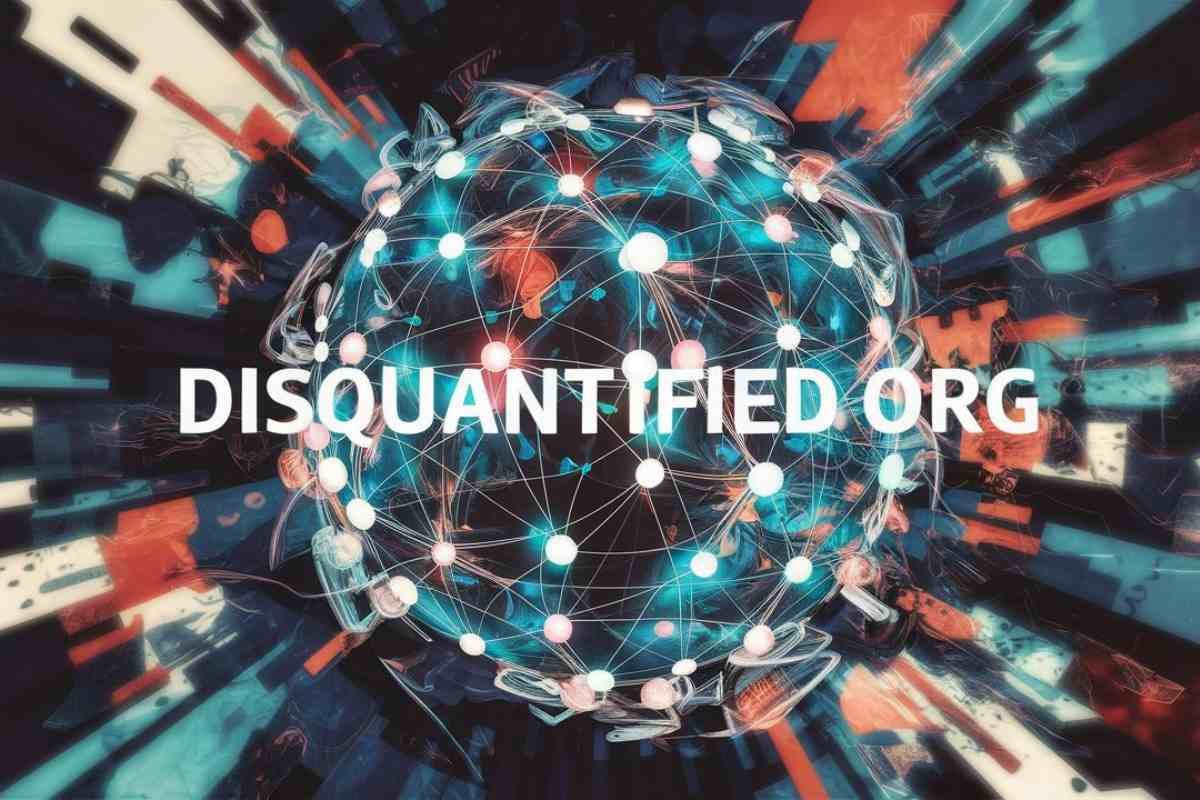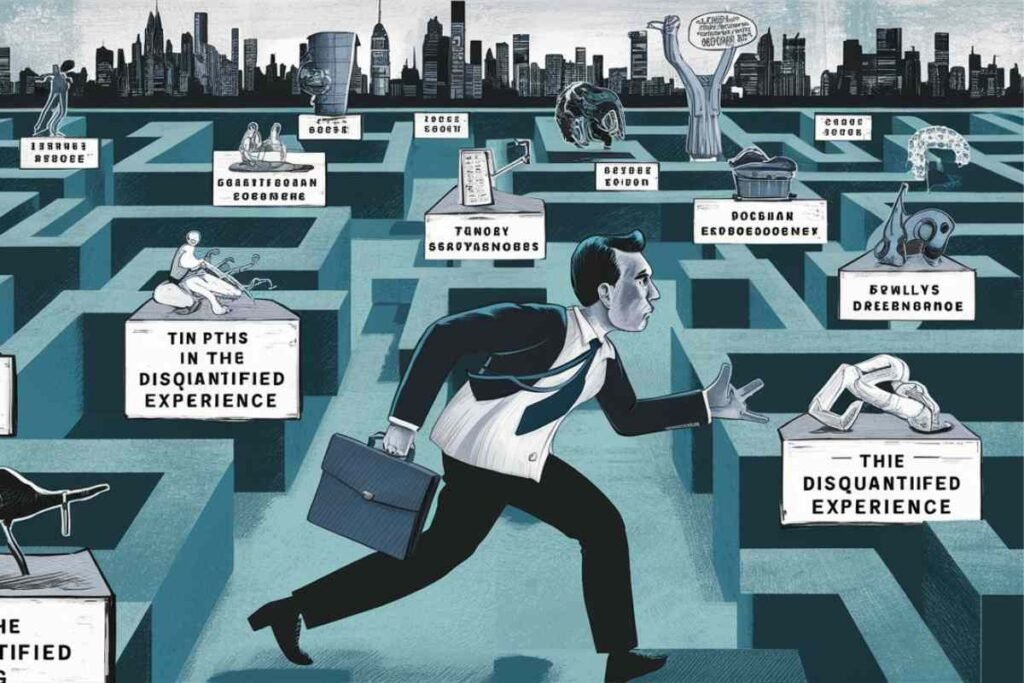
Table of Contents
In the rapidly evolving digital landscape, the concept of Disquantified ORG has emerged as a crucial topic of discussion.
As organizations grapple with vast amounts of data, ensuring its accuracy and reliability becomes paramount.
In this comprehensive guide, we will delve into the intricacies of Disquantified ORG, explore its impact on data integrity, and unveil strategies to effectively navigate this complex terrain.
Introduction
In today’s era of information abundance, where data flows ceaselessly from myriad sources, the concept of “Disquantified ORG” has emerged as a pivotal concern.
As organizations endeavor to harness the vast power inherent in data for the purpose of informed decision-making, the imperative to comprehend and address disquantification becomes all the more pressing.
This phenomenon, characterized by the erosion of data quality, completeness, and accuracy, poses a formidable challenge to the very foundation of decision-making processes.
It is no longer sufficient to merely accumulate vast volumes of data; rather, organizations must navigate the intricate landscape of disquantification, wherein the true value of data often becomes obscured amidst distortions and manipulations.
Only by unraveling the complexities of disquantification can organizations hope to unlock the full potential of their data assets and chart a course towards more enlightened decision-making in an increasingly data-driven world.
What is Disquantified ORG?

Disquantified ORG encompasses the degradation of data quality, completeness, and accuracy. It goes beyond mere data loss, involving the distortion and manipulation of information, making it challenging to discern the true meaning.
Examples of Disquantified include incomplete datasets, lack of context, and omitted details, all of which hinder informed decision-making and undermine data integrity.
Impact on Data Accuracy
The ramifications of Disquantified ORG reverberate across diverse sectors, transcending mere data discrepancies to permeate decision-making processes with profound implications.
Inaccurate data not only obscures the truth but also serves as a catalyst for misguided judgments, with far-reaching consequences across critical domains including business analytics, academic research, and healthcare.
Real-world instances vividly illustrate the havoc wreaked by distorted information, from flawed market analyses leading to erroneous business strategies to compromised medical diagnoses jeopardizing patient outcomes.
These examples underscore the pressing need to confront disquantification head-on, recognizing its pervasive influence and prioritizing measures to safeguard the integrity and reliability of data across all spheres of human endeavor.
Identifying Disquantified Data
Indeed, the ability to identify disquantified information serves as the initial linchpin in mitigating its adverse effects on decision-making processes.
Establishing rigorous data validation and verification protocols stands as a foundational imperative in this endeavor, offering a systematic framework for assessing the authenticity and comprehensiveness of data.
However, beyond procedural measures, fostering a culture of critical thinking among users emerges as an indispensable asset in the quest for data integrity.
Encouraging individuals to scrutinize the accuracy and reliability of the data they encounter empowers them to discern between trustworthy information and potential distortions, thereby fortifying the foundation upon which decisions are made and reinforcing the integrity of organizational knowledge.
Addressing Disquantified Challenges

Navigating the challenges presented by Disquantified demands a comprehensive and multi-pronged strategy.
Organizations must harness the dual forces of advanced technologies and human expertise to confront the intricacies inherent in disquantified data effectively.
This entails leveraging cutting-edge tools and analytical methods to detect and rectify distortions, while simultaneously tapping into the nuanced insights and contextual understanding offered by human intuition.
Additionally, the establishment of clear and robust guidelines governing every stage of the data lifecycle from collection and storage to processing and dissemination serves as a cornerstone for promoting transparency and accountability within the organization.
By marrying technological innovation with human insight and implementing stringent governance frameworks, organizations can fortify their defenses against the perils of disquantification and uphold the integrity of their data ecosystem.
Future Trends in Disquantified
As the terrain of Disquantified undergoes perpetual transformation, propelled by the relentless march of technological progress and the shifting tides of societal norms, organizations find themselves navigating an ever-changing landscape fraught with complexity and uncertainty.
Anticipated developments on the horizon hold promise for the creation of sophisticated tools and methodologies poised to combat and preempt the insidious effects of Disquantified, thereby laying the groundwork for a more resilient, trustworthy, and transparent information ecosystem.
In light of these imminent changes, organizations must remain vigilant and agile, staying abreast of emerging trends and innovations to recalibrate their strategies proactively and fortify their defenses against the encroaching tide of data distortion.
Only by embracing adaptability and foresight can organizations navigate the turbulent waters of Disquantified and safeguard the integrity of their data assets in the face of relentless evolution.
Incorporating Disquantified ORG Awareness in Education
Educational institutions serve as the bedrock of knowledge dissemination and intellectual growth, wielding significant influence in shaping the competencies and perspectives of future generations.
Recognizing the paramount importance of digital literacy in today’s information-driven landscape, these institutions are tasked with the crucial mission of equipping students with the requisite skills and acumen to navigate the complexities of the digital realm adeptly.
By integrating Disquantified ORG awareness into their curricula, educational institutions not only empower students to scrutinize information critically but also instill in them a sense of responsibility in consuming and disseminating data.
Through the cultivation of a culture that values discernment and data literacy, these institutions play a pivotal role in cultivating a generation of informed, conscientious individuals poised to navigate the intricacies of the digital age with confidence and integrity.
The Role of Ethical Considerations

Ethical considerations lie at the heart of responsible data management and decision making, serving as guiding principles to safeguard against the potential pitfalls of disquantified data.
In the age of information abundance, where data holds unprecedented power and influence, upholding ethical standards becomes not just a matter of moral imperative but a critical necessity.
By prioritizing the responsible use and dissemination of data, organizations can mitigate the risks of unintended consequences and mitigate potential harm to individuals and society at large.
Adhering to ethical principles ensures that data-driven decisions are grounded in integrity, respect for privacy, and a commitment to fairness, thereby fostering trust and credibility in the data ecosystem.
Ultimately, by embedding ethical considerations into their practices, organizations can navigate the complexities of Disquantified with integrity and accountability, ensuring that data serves as a force for positive change rather than a source of harm.
Conclusion
In conclusion, navigating the landscape of Disquantified ORG in the digital era necessitates a holistic and proactive approach, encompassing technological innovation, human expertise, educational empowerment, and ethical integrity.
As organizations strive to harness the power of data for informed decision-making, they must confront the pervasive challenges posed by Disquantified head-on, recognizing its profound implications for data integrity and organizational success.
By embracing advanced technologies, fostering a culture of critical thinking, integrating Disquantified awareness into education, and upholding ethical principles, organizations can fortify their defenses against the insidious effects of data distortion and chart a course towards a more resilient, trustworthy, and transparent information ecosystem.
As we continue to navigate the ever-evolving terrain of Disquantified, let us remain steadfast in our commitment to upholding the integrity of data and harnessing its transformative potential for the betterment of society.
FAQs
What is Disquantified ORG?
Disquantified ORG refers to the degradation of data quality, completeness, and accuracy, often involving distortion and manipulation of information.
Why is Identifying Disquantified ORG Data Important?
Identifying Disquantified ORG data is crucial for mitigating its adverse effects on decision-making processes and ensuring the reliability of information.
How Can Organizations Address Disquantified Challenges?
Organizations can address Disquantified challenges by leveraging advanced technologies, fostering a culture of critical thinking, and implementing robust governance frameworks.
What are Future Trends in Disquantified?
Future trends in Disquantified include the development of sophisticated tools and methodologies to combat data distortion and promote transparency.
Why is Disquantified Awareness Essential in Education?
Disquantified awareness in education empowers students to critically assess information and cultivate responsible data consumption habits.
What Role Do Ethical Considerations Play in Data Management?
Ethical considerations are vital for safeguarding against potential harm from disquantified data and ensuring data-driven decisions are grounded in integrity and fairness.



Leave a Reply